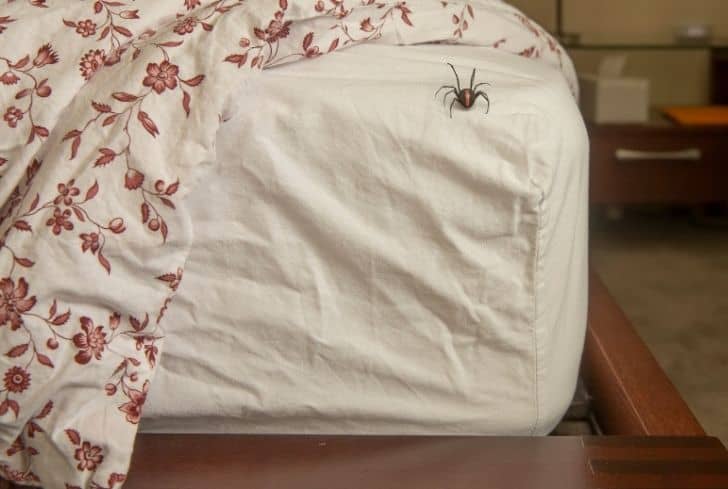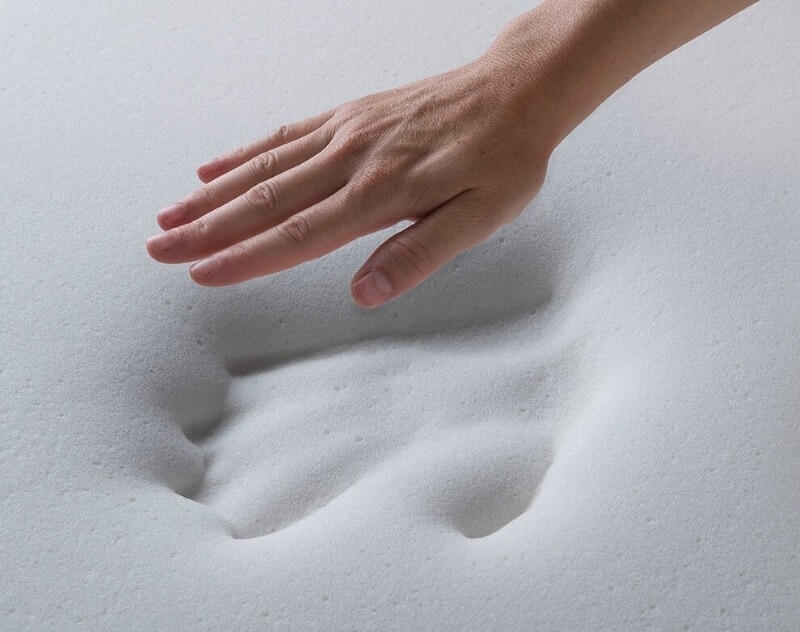

Sleep is more than just rest. It offers some amazing benefits Trusted Source 10 Reasons Why Good Sleep Is Important Getting quality sleep is one of the best things you can do for your health. Here are 10 evidence-based reasons why good sleep is important. www.healthline.com for the body including improved concentration, better weight management and better overall health. Unfortunately, good sleep can be difficult and many people struggle to feel comfortable in their bed.
Sleeping on the floor has become an increasingly popular phenomenon. It is not just for students crashing after a night of partying. With the right preparation, using the floor can be a great way to relax and recharge your batteries.
In this article, we’ll explore the benefits of sleeping on the floor, the best positions, the best sleep surfaces and any potential drawbacks. So, you will have all the information you need to determine if sleeping on the floor is the right option for you.
The main benefit of sleeping on the floor is that it can reduce your back pain. Since the spine is more prone to curving when you’re on a soft surface, the floor may provide an improvement in your posture. You may find that the firm surface may help to align your spine and neck, reducing aches and pains.
Sleeping on the floor can also feel cooler. If you tend to feel overheated at night and wake up in a sweat, you may prefer the cooler temperature sleeping closer to the ground.
There are also other potential health benefits of sleeping on the floor. You may end up feeling more rested and ready to get started in the morning. If you find that you hit the snooze button multiple times every morning, you may actually be a little too comfortable in your bed. When you sleep on the floor, the firm surface may be just comfortable enough, so you feel rested, but don’t need to linger in the mornings.
While it is important to get a good quality of sleep, you don’t want to be so comfortable that you would lay there for hours. Although initially, it may feel a little uncomfortable to rest on the floor, once you fall asleep, it won’t really matter. The chances are you only feel your comfortable mattress before you actually fall asleep and when you wake up.
In addition to the health benefits, there are some other benefits of sleeping on the floor. Switching to a floor sleep lifestyle could provide benefits including:
More Space:
The chances are your bedroom is dominated by your bed. Unless you have a massive bedroom, your bed is likely to take up most of the space. So, if you start sleeping on the floor, you won’t need to have the bed taking up the space.
Once you remove the bed from your bedroom, you’ll have floor space to put some exercise equipment, create a relaxation area with lots of plants or simply have a lounge room. Without the bed, your bedroom will become just another room in your home that you can use in any way you please.
You Can Sleep Anywhere:
Once you’re used to sleeping on the floor, you can literally sleep anywhere you like. If you have a long flight layover, you can just stretch out on the floor and get some sleep, while your fellow travelers struggle to rest on those uncomfortable airport chairs.
You will also find it easier to fall asleep when you’re camping or staying with family. You can also explain to your family and friends that they don’t need to provide an extra bed for your overnight stays.
It is important to recognize that there are both pros and cons of sleeping on the floor. We’ve covered whether sleeping on the floor for back pain is a good idea, but in some cases, you may find that it exacerbates your back problems. While some people claim the firm surface reduces pain, others find the opposite. In a 2003 study, over 300 adults with non-specific chronic low back pain were randomly assigned into one of two groups with different mattresses for 90 days.
The group with medium firm mattresses had less back pain compared to those sleeping on a firm mattress. While this study is quite old, it does suggest that firmer surfaces may not relieve your back pain.
Another possible drawback is allergic reactions. Our floors typically have more dirt and dust compared to other home surfaces. This is particularly applicable if you have carpets that contain allergens such as dust mites, dust and mold.
If you are sensitive to these allergens, you could experience a runny nose, sneezing, coughing, itchy eyes, wheezing or breathing difficulties.
Since heat rises, you may also find the floor feels colder than the rest of your room. While it may feel comfortable to sleep on your floor in summer, in winter you may feel very chilly. If you generally prefer to feel warmer when you sleep, the increased cold exposure may make sleeping on the floor difficult.
If you want to sleep on the floor, you will need to make some preparations before you get started.
Firstly, you will need to find adequate space on your floor that is free of any clutter. Place your sleep surface on the floor. This can be a mat, sleeping bag, blanket or multiple layers. You’ll also need a thin pillow. Try to avoid stacking pillows, as this can cause neck strain.
You can now lie on the floor and experiment with different positions to see which one feels best for you. If you’re lying on your stomach or back, use a second pillow for extra support on your knees. If you prefer you can also put a pillow under your lower back. When sleeping on your side, it is a good idea to put a pillow between your knees.
Try to give yourself some time to get used to lying on the floor. Rather than trying for a full night’s sleep, try taking a short nap first. You could also set your alarm for a few hours before you return to your bed. You can increase how long you sleep on the floor over time until you’re there for a full night.
Experiment with different layers of bedding and try out different positions until you find your preferred arrangement. Just be sure to air any bedding that touches the floor when possible. This will reduce the risk of mold forming and keep your bedding fresh and comfortable.
As we touched on above, there are a number of different sleeping positions, each of which has pros and cons. Just as sleeping on a bed, you can sleep on the floor in any number of positions. Don’t assume that sleeping on your back will give you the best support. Sleeping in certain positions can aid in correcting musculoskeletal issues and joint issues.
If you’re sleeping on your side, you can use your arm as additional support for your head. Providing you don’t hunch your shoulders, you can achieve proper neck support even without a pillow.
Sleeping on your side can also maintain proper posture as it helps the vertebrae align as you breathe. You can also place your feet to stretch your Achilles tendon and toes to help correct bunions or other toe joint issues.
Sleeping on your stomach can offer a number of health benefits. If you push out your elbows and use your forearms as a pillow, it is easy to correct your spine.
Sleeping on your back may be a good pain avoidance option. It allows the spine to be supported and the hamstrings, hip flexors and pectoral muscles to relax, the tightening of which can lead to further pain.
There is no right or wrong answer to which position is best for you, you will need to experiment to find the best sleep position. You may need to try a few positions, just try to keep your posture loose and relaxed.
There are some factors that will impact your sleep position, including your age, if you have any back pain, whether you’re prone to sleep apnea or snoring, or whether you’re pregnant.
If you have shoulder or back pain, you can increase your sleep quality and reduce discomfort by sleeping on your back. This will distribute your weight across your entire spine, helping to maintain your natural spine curvature. However, if you have neck pain, you may prefer sleeping on your side.
If you are prone to snoring and sleep apnea, you may find it is reduced by sleeping on your side. Research has shown that the frequency and severity of sleep apnea is reduced in a side sleeping position.
If you have gastrointestinal disturbances, acid reflux or other gastrointestinal symptoms that interfere with your sleep, lying on your left side may be beneficial. It is thought that left hand sleeping can keep the stomach esophagus intersection is kept above the level of gastric acid.
In pregnancy, the best sleep position is on your side. While you are more likely to experience heartburn, back pain, nausea, restless leg syndrome and sleep apnea, sleeping on your back may increase the risk of stillbirth after 28 weeks.
There are lots of options for sleeping surfaces. Some just serve as a barrier between the floor and your body, while some are like a firm mattress. While you may want to feel completely natural, you may enjoy a little extra comfort.
It is important to choose a surface that is not so soft you sink into it, as this will negate the benefits of a firm floor. If the surface has too much give, you won’t be able to get all the benefits of the floor.
The tatami has a long history in Japanese culture. They have been used for over 1200 years for sleeping. These mats range in size and can be found a couple of inches thick, like the IKEHIKO to almost mattress thickness.
In traditional Japanese houses, tatami was used as flooring, making it comfortable to walk barefoot. Traditionally, tatami is made using a core of rice straw with a soft rush straw covering. This allows it to have modest give when under pressure. However, modern tatami includes a core of wood chip boards or polystyrene foam.
Due to their design, tatami makes an ideal sleep surface, they offer just enough give to feel comfortable on a hard floor.
Futons make a great mattress alternative when you’re sleeping on the floor. The best futon is a thick pad like the Classic Brands futon that provides some elevation, without countering the support of a hard floor.
Whether you have a futon that is stuffed cloth or one with a hard base and soft top layer, futons can help you to make the transition from a bed down to the floor.
Yoga mats have a similar function to a tatami. They are soft, which can help to keep you comfortable on a hard floor without ruining the benefits of the surface. The other advantage of using a yoga mat is the price. They are one of the most economical forms of sleeping on the floor pads. They can be easily found at sports stores and even grocery stores for as little as $10, but you can find thicker, more fancy mats if you’re prepared to pay a little more.
If you already have a yoga mat at home, you could try this as a sleeping mat as you find your way to your preferred comfort.
Another alternative is a massage mat. These come in various shapes and sizes, but all are typically thin enough to take advantage of sleeping on the floor. Some features of massage mats can also counter some basic disadvantages of sleeping on the floor. For example, some are equipped with a heating feature. So, if you’re worried about feeling cold in winter, you may appreciate this.
If you want to take a more traditional route, you could opt for a Thai massage mat. These mats have sections of cotton or other fabrics to provide a little softness. They are designed to lay on when you get a massage, so they can also work well for your sleeping surface.
Sleeping on the floor is not the best option for everyone. In some cases, it may not be safe for you. Those who should not sleep on the floor include:
Older People: Aging involves losing fatty tissues and bones becoming weaker. This means that sleeping on the floor may leave you feeling too cold or increase your risk of fractures. Additionally, if you are older and having joint problems, you may struggle to get down to the floor and up again. In this case, you may prefer the height of a bed and mattress that helps you to get comfortable without popping knee joints or hip issues.
Those Vulnerable to the Cold: If you have a condition that makes you feel cold, such as type 2 diabetes, anemia or hypothyroidism, you may struggle sleeping on the floor. Floor sleeping may make you feel even colder, so it may be best avoided.
Those with Limited Mobility: We have touched on this above, but it can apply to other people. If you have difficulty sitting on the floor or getting up off the floor, you should avoid floor sleeping and instead, sleep on a bed. You should also avoid sleeping on the floor if you have joint problems or issues such as arthritis.
Generally, it is considered safe that you can sleep on the floor when you’re pregnant. In fact, many pregnant people feel comfortable sleeping on the floor. You will need to do what feels good to you. But, bear in mind that you will need to get down to the floor and be able to stand back up. If you find this uncomfortable, floor sleeping may not be the right choice for you.
It is also safe for your baby to sleep on the floor, particularly if you would like to co-sleep, which is typically discouraged if you’re sleeping in a bed. Bed co-sleeping increases the risk of falls, suffocation and SIDS, with the soft surfaces such as blankets and pillows can heighten the risk of blocking baby’s airways.
However, in some cultures, where it is common to floor sleep, co-sleeping is associated with a lower incidence rate of SIDS. Typically, in these cultures people sleep on a firm mat on the floor, with soft items not used. A separate mat may also be used for the baby.
Just be sure to speak to your healthcare professional or pediatrician before you floor sleep with your baby.
Unlike a mattress and box spring, which can be prone to slipping for a number of reasons you are less likely to have problems with your sleep surface moving around. Additionally, the main reason why a mattress moving around on a box spring is a problem is that you can end up sleeping on part of the hard box spring, which can be extremely uncomfortable. Even if your sleep mat slips around, you’ll still be on the mat on the floor. So, it shouldn’t really bother you, particularly if the area where you’re sleeping has been cleared of clutter.
If you are getting frustrated with your mat moving around, you could always use low tack tape, like you can use on a rug to keep your sleep surface in place.
How Can You Transition a Partner to Sleep on the Floor?
If you like the idea of sleeping on the floor, but your partner is not convinced, it can be a little challenging. However, there are ways to transition to you both sleeping on the floor.
You could start by sleeping on the floor solo, which may not be a favorite with everyone, but it will help you to decide if you really like it, before trying to convince your partner.
Another option is to get a thin futon with a half-sized topper for your partner. This way you can get the benefits of sleeping on a firm surface, while your partner has a more soft and squishy sleep experience.
Finally, take your time. While you may be gung-ho about sleeping on the floor, don’t push your partner in the beginning. Many people find spouses will get more into the floor sleeping movement over time without too much pressure. Eliminating their bed is a big ask for most people, so be patient.
Floor sleeping can offer some fantastic benefits, but there are some potential drawbacks, so it is something that you will need to consider. Fortunately, it is not an all or nothing proposition. If you are interested, you can start with a cheap yoga mat and leave your bed in place to decide if you enjoy it and can feel the benefits.
You can then graduate into different sleep surfaces and the best positions. It is well worth starting off slowly. Try taking a nap on the floor and work your way up to a full night of sleep. This will help you become accustomed to the hard surface. Just remember to clear the clutter from your sleep area, so you can relax fully.
Sleeping on the floor may not be for everyone, but it is worth a try. You never know, you may become a floor sleeping convert and try to convince everyone you know to join the revolution.





